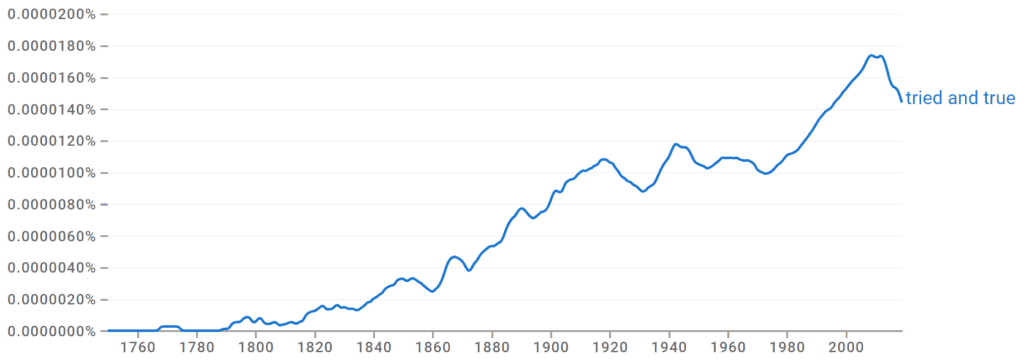Tried and true means that something or someone has been tested and proven reliable and effective. For example, we always make my mother’s pumpkin pie recipe for Thanksgiving because it is tried and true and always comes out the same every time you make it.
This phrase is an idiom that originates in woodworking from the 14th century. Idioms are unique and figurative expressions in the English language that convey meanings different from their literal interpretations. They add flavor to our conversations, enabling speakers to convey ideas in a colorful and memorable way.
Keep reading to fully understand the meaning behind this idiom, its literal origins, and how to use it in various modern examples.
Tried and True Meaning

The phrase tried and true describes something that has worked in the past and is expected to work again. It defines something dependable and reliably effective.
At its core, tried and true underscores a deep sense of trust, something we can lean on even in unfamiliar or uncertain situations. It defines dependability and a history of delivering results—a comfort in knowing that it has stood the test of time and will likely continue to do so.
Is Tried and True Hyphenated?
Tried and true is hyphenated when it appears before a noun—for example, a tried-and-true method or a tried-and-true technique.
Tried and True Synonyms
- Proven
- Tested
- Reliable
- Established
- Trusted
- Time-honored
- Well-founded
- Dependable
- Solid
- Authentic
Using Tried and True in a Sentence
- Grandma’s apple pie recipe is a tried-and-true favorite among our family members.
- When studying for exams, sticking to a consistent schedule and using tried-and-true study techniques can lead to better results.
- The coach emphasized the importance of defensive strategies, which had proven to be tried and true.
- Sarah’s advice was tried and true and helped people save money by regularly investing for future financial security.
- Instead of experimenting with new apps, I stick to the tried and true ones I know work.
- Whenever I’m unsure about a decision, I reflect on the tried-and-true lessons from my past.
- Between the latest gadgets and the tried-and-true classics, I’ll always choose the latter for long-lasting quality.
Tried and True Origins

The term tried, meaning “tested and proven,” has been coupled with the word true, meaning “trustworthy and faithful,” since the mid-14th century. However, its first use was not in relation to dependability in behavior, character, or act. Instead, it was used to describe the finished method of planing wood.
Planing wood is a technique that smooths and evens out wooden planks. A well-planed plank was referred to as being “true”—in other words, flat and even. However, the direct linkage between this woodworking practice and the idiom’s birth is not definitively established.
Regardless of its precise origin, the phrase tried and true evolved over the years to describe dependable and reliable things. It became a widely accepted way to express trustworthiness and consistent performance in various contexts.
Let’s Review
Tried and true has been in use since the 14th century. However, it was originally used in relation to wood planing into a dependable, flat-surfaced plank. Its connotation is one of dependability, making it easily adapted to various situations.
Today, the expression describes something reliable, effective, and honest in its result.
Check out some others we covered:
